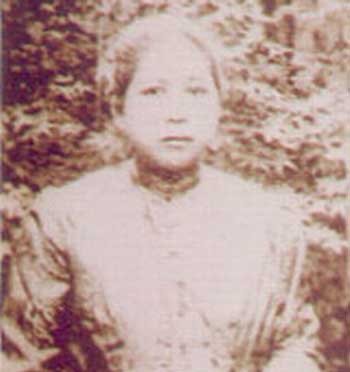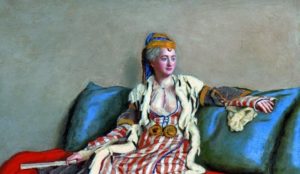Most people don’t know the existence of Raja Aisyah Sulaiman, yet if people were prompted with the question of writers that preached feminism in their works, a daring Southeast Asian woman would most likely not be the first person to run in your mind. Raja Aisyah is praised today by literature scholars for having progressive ideas in a time where being a woman could be a disadvantage due to a culture and tradition that does not deem women as valuable as men.

According to historians, there are no surviving records to create a picture of how she lived her life in detail but to this date, there are multiple archived literature works crafted by Raja Aisyah. Hikayat Syamsul Anwar and Syair Khadamuddin are the most well-known literary works of her time.
There are some little-known facts about her thus we can produce a small biography.
For example, Raja Aisyah Sulaiman was born in Pulau Penyengat, Riau-Lingga estimated in the year 1869 (Died in the year 1924). She was the granddaughter of a nationally renowned writer in Riau, Raja Ali Haji. Her grandfather was most likely her main source of inspiration for her to become a writer and she had a substantial amount of privilege being from an aristocratic family, thus the reason she is an idealistic educated woman.
Raja Aisyah then married Raja Khalid Hiam, a well-known scholar amongst the Malay’s sultanate in which worth noting are from what is known now as the states of Malaysia such as Johor, Pahang, and Terengganu.
Raja Aisyah Sulaiman came from a generation of writers in Riau-Lingga. She was a prominent figure in early accounts traditional printing technique, copying old manuscripts into new sets of paper so they would last for another decade or two. The Riau government in the 19th century looked upon writers a great deal and being a literary writer was a respectable career.
Progressive ideas that challenged the societal norms that could be mistaken for a conceptualization of 21st-century ideals were Raja Aisyah’s cup of tea.
During the 19th and early 20th centuries, Riau was going on a new transition period into a more modernized era. Things were not going well for the government of Riau-Lingga since they were threatened by the presence of the Dutch colonies.
In 1911, Sultan Abdul Rahman was assassinated by the Dutch, hence consequently made the entire aristocratic families in Riau-Lingga fled to save themselves from being murdered in cold blood.
Raja Aisyah and her husband, Raja Khalid Hitam, were no exception and for that reason, they fled to Singapore for asylum.
After that, her husband went back and forth from Singapore to Johor Bahru and Pulau Penyengat to arrange a strategy to counterattack the Dutch colonies. Raja Aisyah even went alongside Raja Khalid Hitam traveling to Japan to ask for help fight the Dutch, but the Japanese government refused. In the next few months, they both went to Tokyo for the second time to ask for support.
This time Raja Aisyah went back home alone without her husband since fate had decided that her husband drew his last breath in Japan. She could not accept the fact that reality has taken her one true love. In the midst of despair for her recent loss, the mindlessly, aristocratic men immediately asked for a hand in marriage with Raja Aisyah. This is because, in Riau’s culture, it is considered respectable for men to marry widowed women who were married to men that fought for their countries.
Nevertheless, Raja Aisyah Sulaiman rejected all the offers of marriage, but not directly. Instead, she acted as if she was mentally unstable and ill.
After that, she wrote one of her famous works during her prime, “Syair Khadamuddin” which full of sarcastic poetry about men’s notion of romance and the aggressive pursuit of marriage at that time. In which she wrote:
Cinta kenangan selama terpendam,
Syair Khadamuddin
Kebakarang tidak kalanya padam,
Jika seperti orang mengidam,
Bila diperoleh habislah dendam
This roughly translates to:
Memory of love hidden,
A fire that never ends,
Akin to the cravings of a woman bearing a child,
If attained the revenge is done
The tone in this poem is annoyance and criticism. Raja Aisyah implies that the men who asked her hand in marriage were as if they had the hormonal imbalance of a pregnant woman since they kept persisting even after Raja Aisyah refused.
She was a woman of her time, yet she is not popular among Malaysians and Indonesians. Her name is drowned in history amongst other great southeast Asian writers before the 21st century.
Her literary tale “Hikayat Syamsul Anwar” tells a story of a woman who disguises herself as a man to avoid getting married. This plotline was unheard of during her time in her own nation. It is clear her literary works are inspired by her own personal life. It is important to remember her presence in the literature community since there are not many southeast Asian representations in mainstream history.

Fatihah Rozman is a content writer and copywriter at Loonaq Records with a passion for history and arts. She has a quirk of wanting to know it all with a sprinkle of getting to the bottom of things.






Leave a Reply